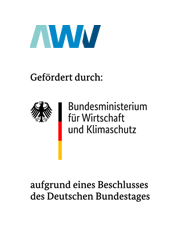How did you convince the people of Estonia and the administrative staff who had to roll those things out, to support your e-Government activities? Was there no sensitivity about privacy or data protection?
One thing is how to get the administration moving in and the other one is how to get the public come along or use „e“- services. I will start with the public. We historically started from a context, that trust was never that much of an issue after we left the Soviet Union. I am not saying that we were necessarily ignorant. But it is also that the people have not really thought back in that days, that someone’s privacy could be violated. At the same time I do not really want to wait in an office for longer than necessary. So they were very pragmatic: If I get some value perhaps I still might use the services offered. Secondly, from very early on we have been very conscious to safe regulations and cards from the legal point of view. Our data protection rules are the same as in all of Europe. We have been also very transparent how we use the data, for example in a regular transparency report. And the third element is – we are always very open and say „Look, something can happen“, that there is always a residual risk. We just try to manage this as best as we can. We communicate very much to the public about this and say, if something has happened we hope it was an incident, it will be different the next time. There really is this awareness in addition to the value and the safe cards.
Do you ask the public sector what they are missing in your initiatives and strategies?
Yes, sure. They can always announce their requests and suggestions. And I think we should ask them more about their needs or what our initiatives are lacking. Let us take an example. Last year we started an initiative in that context. We literally told the company federations, industry associations, and the public „Look, we do this initiative about the simplification of procedures. So you tell us what you want to get simplified!“, and they came up with a load of suggestions and then basically we just went through these suggestions and startet to implement them one by one. This procedure is applicable for a lot of these digital initiatives. And when we develop our strategies, we again both consult and involve academic people, companies, representatives, users and so forth.
So we try a lot, and – mind you – Estonia is small. It is a good and a bad thing at the same time to be small, so the good thing is, it is easy to involve the right people, the bad thing is just there are not too many of them.
Are German firms located in Estonia involved in that process, too?
We do not necessarily go around asking companies, so it depends on the case. We do not discriminate between Estonian or foreign origin, but I think it just happens that German companies here are not the most
active ones to participate in the initiatives and strategies. But we talk for example to quite a few other foreign investing companies, big players in the market or global players like that. Basically it depends on if they want
to be involved.
Is that part of the program to make Estonia more attractive for investors?
Well, that is one thing but it is also important from the technology policy point of view to have a hand in the flow of new ideas and technologies, to understand what are they up to in a way, what are the networks up to or where does some service go to, whatever their field might be, where is telecommunication going to go. Our idea is be part of this, or have an understanding of handling and trends in a way. Even in the official bodies or institutions we have created, for example councils for strategies, steering and so on, we always have the industry or representatives of the industry on board.

